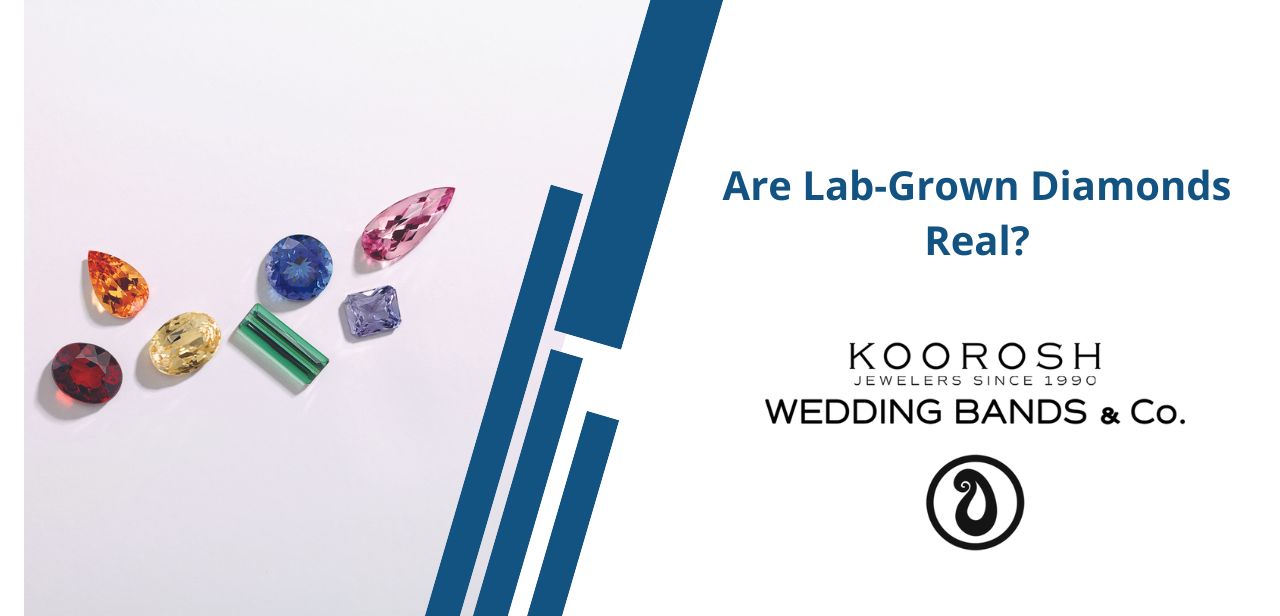Are Lab Grown Diamonds Real?
Posted by Koorosh Daneshgar on Jan 11th 2023

Lab-grown diamonds, are real diamonds that are created in a laboratory setting using cutting-edge technology. These diamonds are physically, chemically, and optically identical to natural diamonds, but are produced using advanced techniques that can produce large quantities of high-quality diamonds in a relatively short amount of time.
The process of creating lab-grown diamonds begins with a small diamond seed, which is placed in a chamber filled with a carbon-rich gas mixture. Using high temperatures and pressures, the carbon atoms in the gas mixture bond to the diamond seed, slowly building up layer upon layer to create a full-sized diamond. This process is known as chemical vapor deposition (CVD) and can take anywhere from a few weeks to a few months to complete, depending on the size and quality of the diamond being produced.
Another method called High Pressure High Temperature (HPHT) is also used to create lab-grown diamonds. This method mimics the conditions found deep within the Earth where natural diamonds are formed. HPHT process uses a diamond seed and places it in a chamber with graphite and a metallic catalyst where extreme pressure and temperature are applied.

Lab-grown diamonds are virtually identical to natural diamonds, both in terms of their physical properties and their appearance. They have the same hardness, refractive index, and other characteristics as natural diamonds, and are virtually indistinguishable from natural diamonds using standard gemological techniques. They also show a similar range of colors, clarity and inclusions as natural diamonds. Visit "Lab-Grown Diamond vs Natural Diamond" for more information.
The main advantage of lab-grown diamonds over natural diamonds is that they are typically less expensive. Because they are produced using advanced technologies, lab-grown diamonds can be produced in large quantities at a much lower cost than mining natural diamonds.
Another advantage of lab-grown diamonds is their environmental impact. The mining of natural diamonds can have a significant impact on the environment, as it requires the displacement of large amounts of earth and can cause damage to sensitive ecosystems. In contrast, lab-grown diamonds can be produced using relatively small amounts of energy and resources, and do not require the displacement of large amounts of earth.

One of the main concern is the transparency of lab grown diamond as some of them are sold as natural diamonds, which is illegal. It's important to buy from a reputed lab grown diamond supplier or ask for certifications to ensure that the diamond is indeed lab-grown and not natural.
In conclusion, lab-grown diamonds are real diamonds, and are indistinguishable from natural diamonds in terms of their physical and optical properties. They offer a cost-effective and environmentally friendly alternative to natural diamonds, and are becoming increasingly popular among consumers looking for an ethical and sustainable option.

